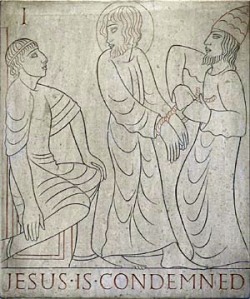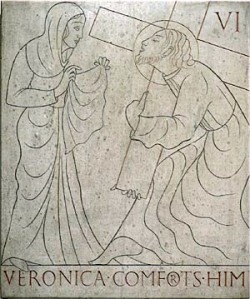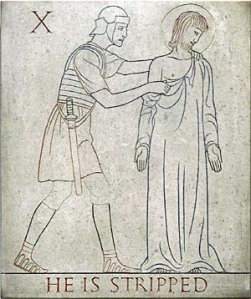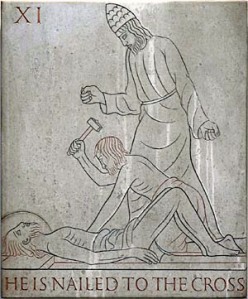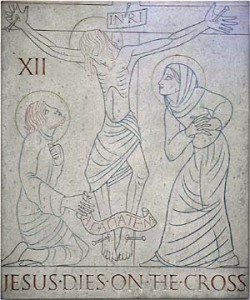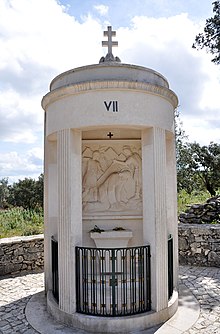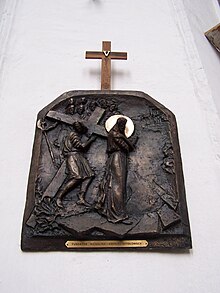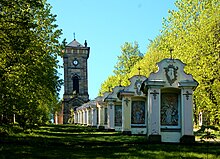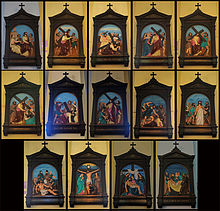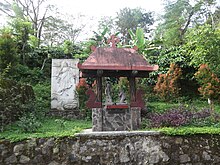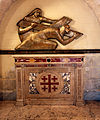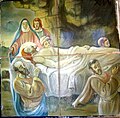Julia Varady with The National Philharmonic conducted by Gianandrea Gavazzeni and The London Opera Chorus directed by Terry Edwards. "Sto cercando di individuare le chiese e loro posizioni. Ho perso i miei appunti originali e apprezzerei il vostro aiuto." - SICILY.Time00.00 Messina The Church of Christ the King00.17 Palermo Cathedral00.29 Chiesa di S. Guiseppe (XV11) - Taormina00.40 Chiesa Madre - Augusta00.59 The Church of Christ the King - Messina01.19 Modica, S. Maria del Soccorso01.37 The Cathedral of Syracuse (Duomo di Siracusa)01.53 The Cathedral of Syracuse (Duomo di Siracusa)02.20 Chiesa di S. Maria - San Piero Patti02.27 Monreale Cathedral03.02 Taormina, San Giussepe03.19 Palermo, Santa Caterina03.50 Palatine chapel of St Peter and St Paul, Palermo.04.02 Palermo, Santa Caterina04.23 Casteltermi04.3604.50 Messina 12th Century Church of Annunziata dei Catalani05.07 Fiumefreddo (Ct) - La Chiesa parrocchiale
Concerto Giovane Orchestra d’Abruzzo, Skyline Brass Ensemble, Coro dell’Accademia di Pescara, Coro Vox Nova di Fabriano, Coro Ventidio Basso di Ascoli Piceno - Laura Toro, soprano - Riccardo della Sciucca, tenore - Davide Filipponi, basso Maestri del coro: Pasquale Veleno, Alberto Signori, Giovanni Farina
Pietro mascagni -Inneggiamo il Signore è risorto - da " Cavalleria Rusticana "17° Concerto d'Autunno eseguito il giorno 18 ottobre 2008 presso la Chiesa parrocchiale di Gessate -Direttore : M° Pierangelo PelucchiSoprano : Nicoletta CerutiOrganista : Emilio BrambillaOrgano : Balbiani - Vegezzi - Bossi (se non ricordo male 32 composizioni sonore) anno costruzione : circa 1968Corale S.s.Pietro & Paolo www.coralegessate.orgOrchestra sinfonica Gaetano Donizetti di Gessate
St. John Passion – Bach
The St John Passion, performed by the Nederlands Bach Society for All of Bach, was the first Passion Bach had written as cantor in Leipzig. The Passion story as told in the Gospel of John is different from that told by the other three evangelists – Matthew, Luke and Mark. John’s version places the emphasis on Christ’s divine origin. Throughout his suffering, this divine origin still plays a role and nowhere is Jesus as human as in the other gospels.
For this performance, we selected a cast of singers under the age of 35. Apart from the leaders, all the orchestra members are also younger than 35. The concert series was preceded by a course of auditions and masterclasses.
Join Classic FM Drive presenter John Brunning as he takes you on an animated tour of the life of Johann Sebastian Bach - one of music's most sublime creative geniuses.
Impressive solo arias, like ‘Ev’ry valley shall be exalted’ and ‘Rejoice greatly, O daughter of Zion’ are interspersed with compelling chorus numbers, telling the story of Jesus’ birth, life, death, resurrection, and final victory over sin and death.
The rousing ‘Hallelujah’ chorus is by far the most widely-known section of the work, and audiences tend to stand during performances – a tradition that allegedly began when King George II stood during the chorus at the oratorio’s London debut performance.
The official audio of "Amazing Grace" by Aretha Franklin with James Cleveland and The Southern California Community Choir from the album 'Amazing Grace' (1972). 'Amazing Grace' earned Aretha a Grammy in 1973 for Best Soul Gospel Performance and remains the best selling Gospel album of all time.
It’s not certain when Allegri’s Miserere was composed, but we know it was during the reign of Pope Urban VIIII, probably during the 1630s. It would have been used for services in the Sistine Chapel on Holy Wednesday and Good Friday of Holy Week.
The magnificent "Miserere mei, Deus" composed by Allegri and here brilliantly performed by the Choir of New College, Oxford.
Also known as The Great Russian Easter Overture, is a concert overture written by the Russian composer Nikolai Rimsky-Korsakov between August 1887 and April 1888, and dedicated to the memories of Modest Mussorgsky and Alexander Borodin, two members of the legendary "Mighty Handful".It is subtitled "Overture on Liturgical Themes". It is the last of the composer's series of three exceptionally brilliant orchestral works, preceded by Capriccio Espagnol and Scheherazade. The work received its premiere in St. Petersburg in late December 1888.Conductor: Zubin MehtaOrchestra: Israel Philharmonic OrchestraPicture: Il'ja Efimovič Repin, Easter Procession in the region of Kursk (1880-1883)
“Much of the Passion in general – persecution of the innocent, malevolent authority exerting itself against ideas that threaten and challenge, the power of a peaceful, loving humility in the face of tyranny, the facing-down of fear – holds profound universal resonance for people of many faiths and those of none. It is this universal meaning that my Invictus: A Passion hopes to address, so that [...] it might find relevance with choirs and their audiences or congregations everywhere.”
Invictus: A Passion: Invictus · Christ Church Cathedral Choir · Howard Goodall · The Lanyer Ensemble · Stephen Darlington · Mark Dobell
Wagner's opera Parsifal all takes place on Good Friday. The Good Friday music from Act III of the opera is a standalone work of art in its own right, but if you have a few hours to spare, we'd recommend you listen to this sublime opera in its entirety.
The composer adapted the music three times – once in 1787 for string quartet, again in 1796 as an oratorio for solo and chorus, and he also approved a solo piano version.
The Seven Last Words of Our Saviour On the Cross (German: Die sieben letzten Worte unseres Erlösers am Kreuze) is an orchestral work by Joseph Haydn, commissioned in 1785 or 1786 for the Good Friday service at Cádiz Cathedral in Spain. The composer adapted it in 1787 for string quartet and in 1796 as an oratorio (with both solo and choral vocal forces), and he approved a version for solo piano.The seven main meditative sections — labelled "sonatas" and all slow — are framed by an Introduction and a speedy "Earthquake" conclusion, for a total of nine movements. Complete all movements.
Easter Oratorio – Bach
It’s no surprise that with a catalogue that includes both of his Passions and the Easter Oratorio, Bach is hailed as one of the finest classical composers of sacred music.
The first version of the work was actually completed as a cantata for Easter Sunday in 1725, but it was later given the Easter Oratorio title in a revived version ten years later.
The Easter Oratorio has four characters assigned to the four voice parts; Simon Peter (tenor), John the Apostle (bass), Mary Magdalene (alto) and Mary Jacobe (soprano).
This is the first of many settings of The Lamentations of Jeremiah the Prophet by a number of composers.
Thomas Tallis scored the work for five voices – an alto, two tenors and a two basses in the Latin text of the bible used in Tallis’ lifetime.
Thomas Tallis was an English organist and composer whose career spanned the reigns of four monarchs and a long period of religious change. He occupies a primary place in anthologies of English church music, and is considered among the most talented of England's early composers.This is part one of his 'Lamentations of Jeremiah', which sets to music verses 1-2 of Chapter 1 (Book of Lamentations).
0:06 Incipit lamentatio etc1:13 Aleph. Quomodo sedet etc3:24 Beth. Plorans ploravit etc6:09 Ierusalem, convertere etc
Incipit lamentatio Ieremiae prophetae.
ALEPH. Quomodo sedet sola civitas plena populo! Facta est quasi vidua domina gentium; princeps provinciarum facta est sub tributo.
BETH. Plorans ploravit in nocte, et lacrimæ ejus in maxillis ejus: non est qui consoletur eam, ex omnibus caris ejus; omnes amici ejus spreverunt eam, et facti sunt ei inimici.
Ierusalem, convertere ad Dominum Deum tuum.
trans. Book of Lamentations 1:1-2
Here begins the lamentation of Jeremiah the prophet.
A. How lonely sits the city that was full of people! How like a widow has she become, she that was great among the nations! She that was a princess among the cities has become a vassal.
B. She weeps bitterly in the night, tears on her cheeks; among all her lovers she has none to comfort her; all her friends have dealt treacherously with her, they have become her enemies.
Jerusalem, turn again to the Lord your God.
The Sixteen ChoirConducted by Harry Christophers





